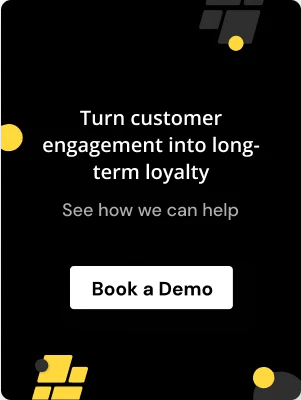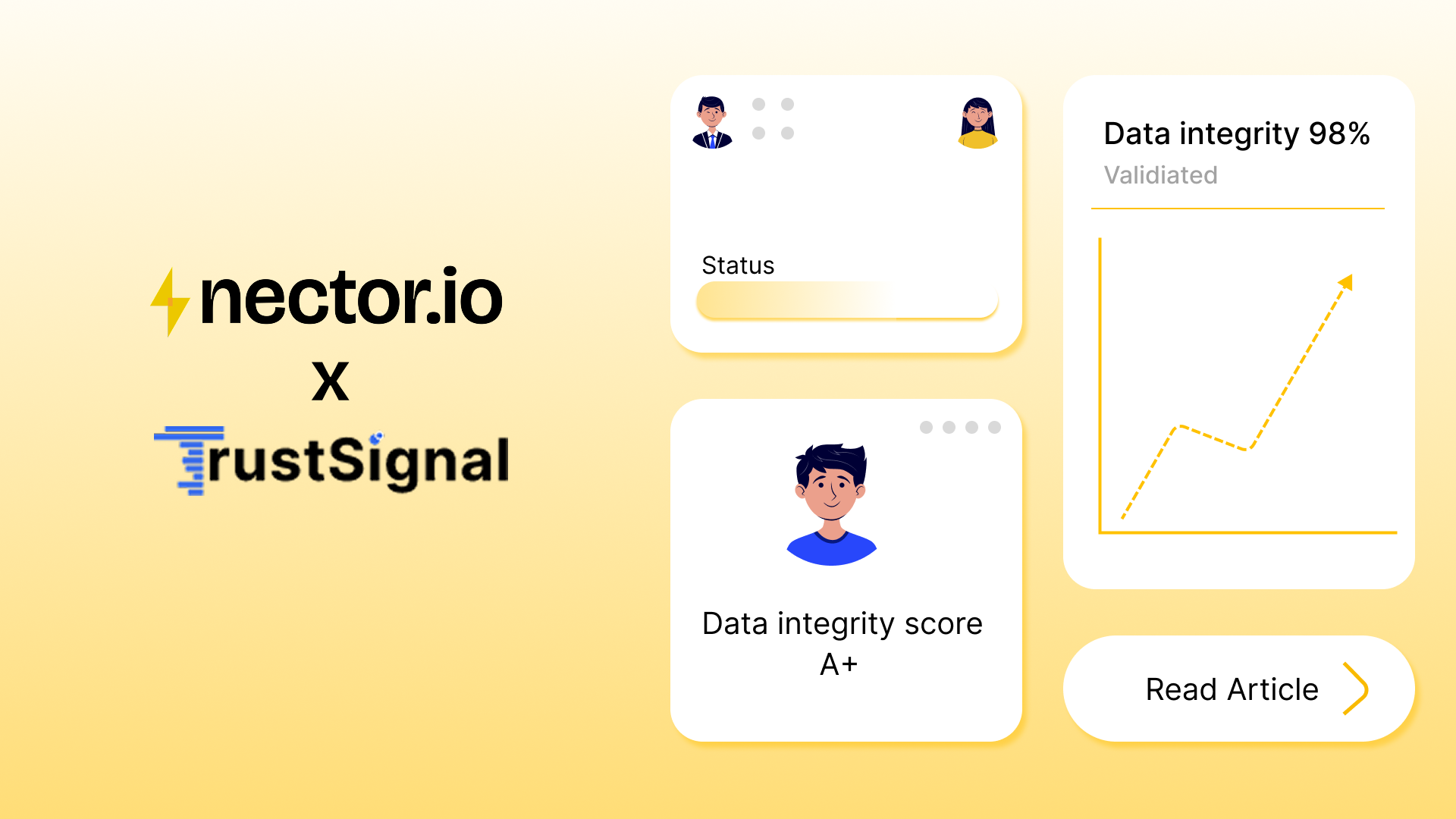.avif)
.avif)
.webp)
Is your Shopify traffic growing but conversions still lagging?
Do you notice new customers coming in, but very few returning for a second purchase?
For most e-commerce founders, the challenge isn’t getting visitors; it’s turning them into loyal, repeat buyers. Across typical Shopify merchants, the repeat purchase rate averages around 28.2%, meaning only about one in four customers comes back to shop again. That leaves a massive opportunity to improve loyalty and increase predictable revenue through the right tools.
Shopify apps now make it easier than ever to automate, personalize, and scale your store’s performance — even if you’re a solo founder or a small team without a dedicated tech department. Whether you’re managing a fast-growing startup or a mid-size brand looking to improve retention, the right app stack can transform your sales without adding complexity.
In this guide, we’ll walk through 16 must have Shopify apps designed to help you drive conversions, engage customers, and grow your store faster in 2025.
What Smart Shopify Founders Can Take Away
- The true power of Shopify apps lies in how well they share data across loyalty, marketing, and review systems, not just in what they do individually.
- Overlapping apps quietly drain resources; founders who audit and streamline quarterly maintain faster stores and cleaner analytics.
- A connected loyalty and referral strategy can turn every existing buyer into an acquisition channel without extra ad spending.
- Consistent branding across emails, rewards, and pop-ups isn’t cosmetic. It builds long-term trust and customer memory that drives repeat sales.
- The best-performing stores use fewer, smarter apps that integrate directly with Shopify, keeping operations simple while scaling retention smoothly.
Why You Need Shopify Apps to Increase Sales in 2025
Running an online store takes more than great products and good design. You’re managing customer inquiries, tracking orders, analyzing sales data, and trying to keep repeat buyers engaged—all at once. Shopify apps simplify these moving parts by automating daily tasks and giving you better control over how your store performs.
E-commerce growth has also made personalization essential. Shoppers expect tailored experiences and fast responses. A HubSpot study found that businesses using AI-powered CRM tools achieved a 75% increase in customer retention through better personalization, visibility, and collaboration. That means the more you automate and personalize, the longer customers stay with your brand.
Shopify apps cover the full journey from first click to repeat purchase. You can use them to improve marketing, checkout, and post-purchase engagement without expanding your team. Below is a quick breakdown of what these tools typically handle and how each contributes to higher sales.
If you’re a founder or part of a small e-commerce team, using these apps gives you a system that works even when you’re not online. Instead of spending hours checking reports or manually managing loyalty campaigns, automation lets you focus on growth and product quality.

Also Read: How to Boost Sales with Seamless Shopify Integration for Your D2C Brand
Choosing the right mix of these must have Shopify apps will help you scale faster, retain more customers, and turn your store into a predictable revenue engine.
How to Pick the Right Shopify Apps for Your Store
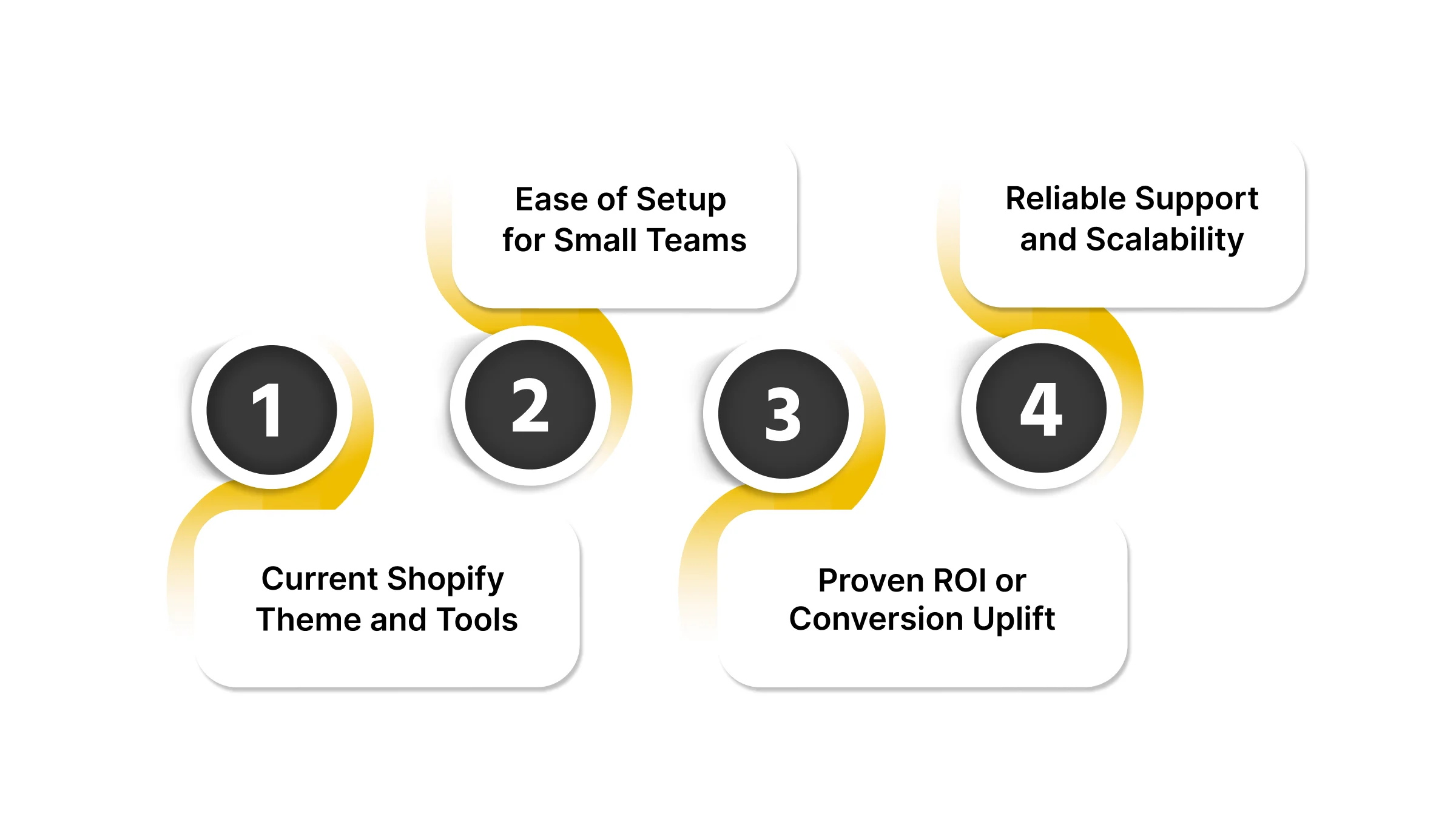
Choosing the right apps for your Shopify store can make the difference between smooth growth and daily frustration. The goal isn’t to install as many tools as possible but to find the ones that save time, improve efficiency, and show measurable results. Before you add any new tool, use a simple four-point checklist to ensure every app fits your business needs and scales as you grow.
Here’s what to evaluate before installing any app:
1. Integration with Your Current Shopify Theme and Tools
Every app should work seamlessly with your existing setup. Check compatibility with your Shopify theme, payment gateways, and third-party tools like Klaviyo, Mailchimp, or Judge.me. Poorly integrated apps can slow down page load speeds or create layout errors that affect user experience.
Key checks before installing:
- Review app documentation on the Shopify App Store for theme compatibility.
- Test integration in a duplicate store environment when possible.
- Verify if the app supports direct connections to your marketing or analytics tools.
2. Ease of Setup for Small Teams
If your team is lean, complex configurations can waste valuable time. Choose apps that come with guided onboarding, setup videos, or one-click templates. Nector is designed for quick deployment without technical assistance.
To ensure smooth onboarding:
- Check if the app offers ready-made templates for campaigns or rewards.
- Look for dashboards that provide real-time insights without additional tools.
- Review user feedback for mentions of “setup time” or “learning curve.”
3. Proven ROI or Conversion Uplift
An app must earn its place by showing a clear return on investment. Evaluate whether it improves customer retention, increases average order value (AOV), or reduces churn. Reliable tools will display performance metrics directly within Shopify or provide reports on engagement and sales growth.
Evaluate the potential ROI using these indicators:
When testing an app, give it at least two billing cycles to assess its real impact on revenue.
4. Reliable Support and Scalability
Technical support determines how quickly you can fix issues and maintain store uptime. Look for apps that offer 24/7 chat or email support, especially if you manage international customers. Scalability also matters. Choose solutions that handle higher traffic volumes or expanded product lines as your business grows.
Assess scalability and support through:
- Verified user reviews mentioning response time and issue resolution.
- Tiered pricing models that adjust with your business growth.
- Clear documentation or a help center with setup guides.
Also Read: Shopify Customer Retention Strategies: Boost Loyalty and Drive Repeat Purchases
Once you know what to look for, it’s time to explore the must have Shopify apps transforming stores in 2025.
16 Must Have Shopify Apps to Increase Sales in 2025
Finding the right mix of apps can help you increase sales without adding extra workload. The following list of 16 must have Shopify apps is organized by function, starting with customer retention and loyalty; key areas where long-term revenue growth begins. Each tool below is selected for its measurable business impact, ease of use, and compatibility with Shopify.
1. Nector: Build Loyalty and Retention That Drives Repeat Sales
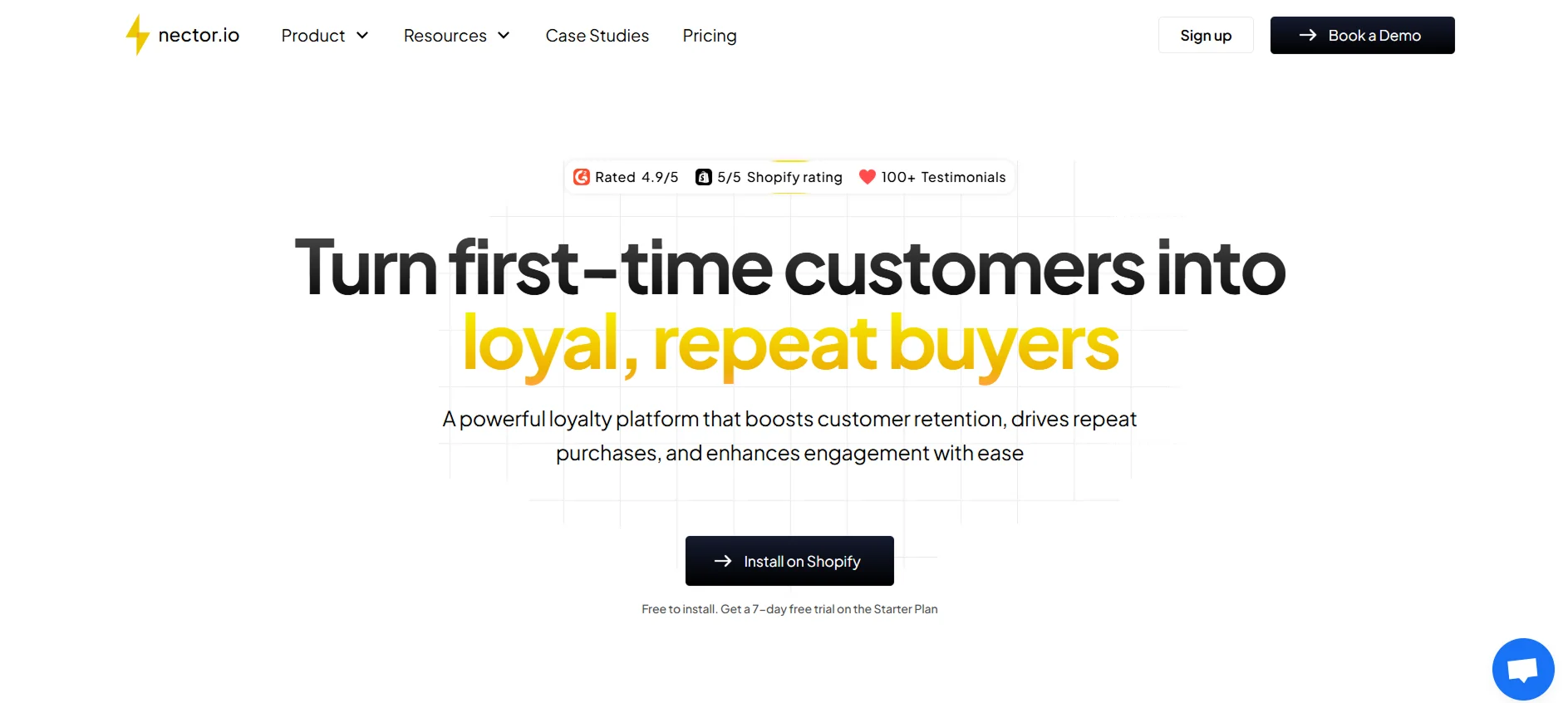
Shopify Rating: 5/5
Nector helps you automate customer retention through loyalty points, referrals, and review rewards; all from a single dashboard. It integrates directly with Shopify, enabling customers to earn and redeem points without leaving your store. Features like visual progress tiers and automated reward notifications keep buyers engaged long after their first purchase.
Why it matters:
Loyal customers are far more profitable than new ones. Studies show that increasing customer retention by just 5% can lead to profit increases between 25% and 95% (Harvard Business Review). Nector turns this insight into an actionable system, helping you create personalized rewards that encourage repeat purchases.
Who it’s best for:
Founder-led stores, early-stage startups, and growth-focused D2C brands that want a loyalty program without needing a dedicated CRM or marketing team.
Impact metric:
Brands using Nector typically report a 20–30% lift in repeat purchases within the first few months of launch.
Key features at a glance:
Want your customers to bring in more customers? Turn satisfied buyers into your most effective marketing channel with Nector’s referral program for Shopify stores. Set up your referral program with Nector now!
2. Smile.io — Simple Rewards and Referral Programs for Shopify Stores
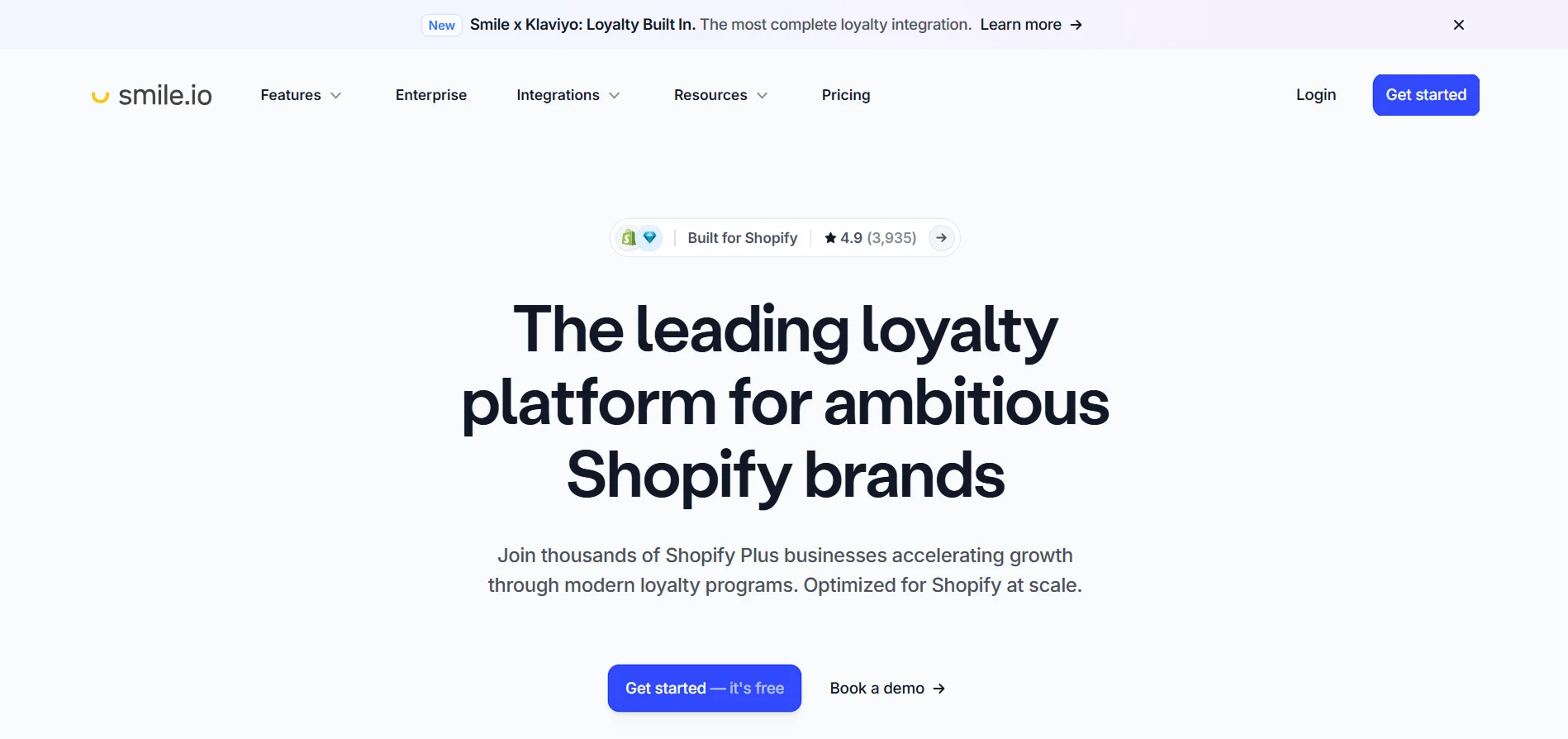
Shopify Rating: 4.9
Smile.io offers easy-to-set-up loyalty and referral programs that reward customers with points and discounts for purchases or social shares. It includes templates that allow you to design branded rewards quickly.
Why it matters:
It’s a user-friendly choice for small teams who want to start with a simple points or VIP program. You can launch rewards directly from the Shopify dashboard without coding.
Who it’s best for:
Solo founders and small Shopify stores that need a plug-and-play loyalty tool.
Impact metric:
Merchants using Smile.io have seen up to 40% higher engagement rates compared to stores without loyalty systems.
Comparison note:
While Smile.io is easy to set up, Nector provides faster onboarding and deeper analytics for tracking referral and redemption performance.
3. LoyaltyLion — Tiered Loyalty and Points System for Engaged Buyers
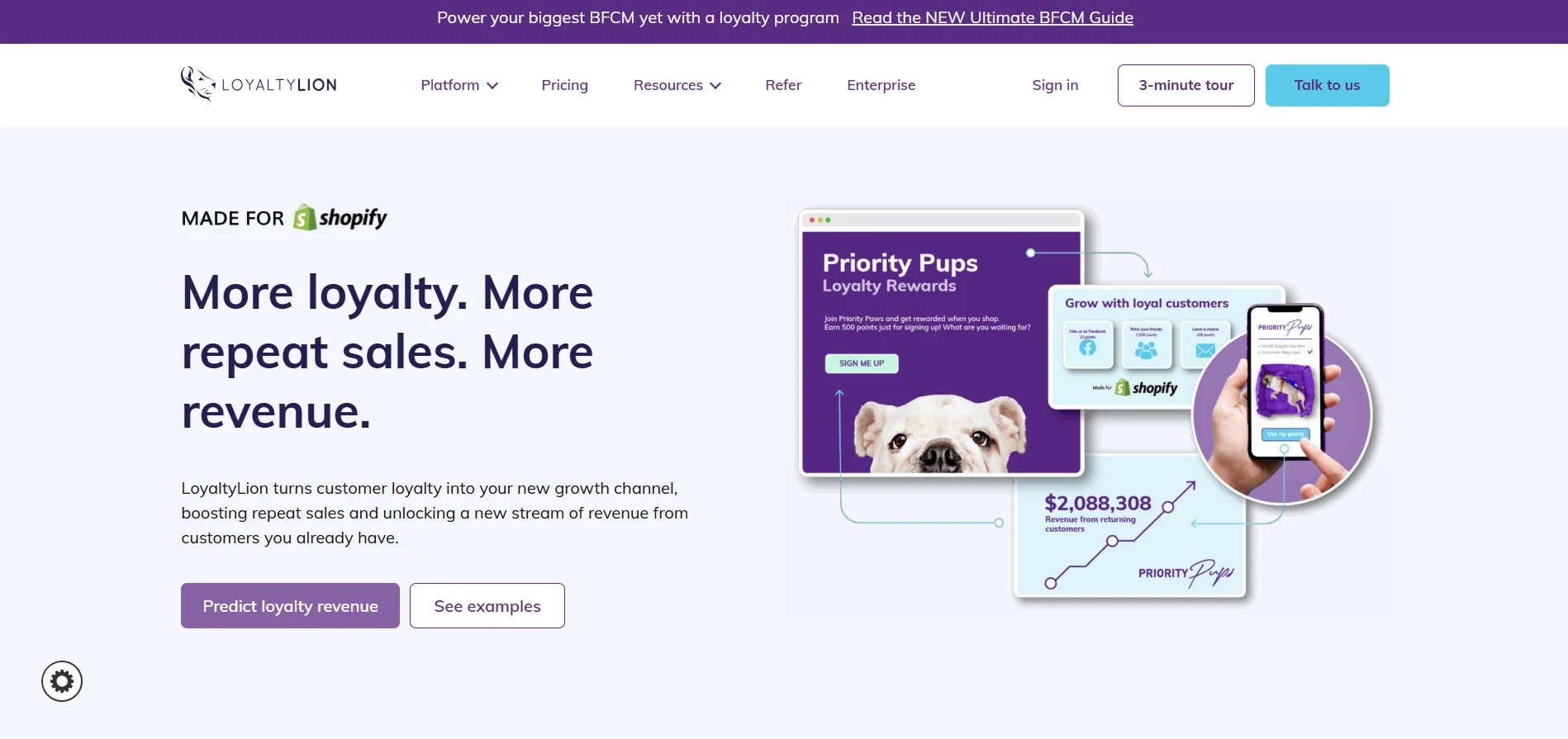
Shopify Rating: 4.7
LoyaltyLion builds advanced loyalty systems with tiered levels, referral incentives, and custom rewards. You can use behavioral data to identify your most valuable customers and reward them accordingly.
Why it matters:
Tiered programs help motivate customers to move up through levels, encouraging them to spend more over time. The app supports branded customization and integrates with major marketing tools like Klaviyo and Mailchimp.
Who it’s best for:
Growing Shopify brands that already have a steady customer base and want to build brand advocacy.
Impact metric:
Stores implementing LoyaltyLion’s tiered model report a 15–20% increase in average order value (AOV).
Comparison note:
Compared to LoyaltyLion, Nector simplifies complex tier setup while still supporting analytics-driven personalization.
4. Yotpo Loyalty & Referrals — All-in-One Loyalty and Review Engine
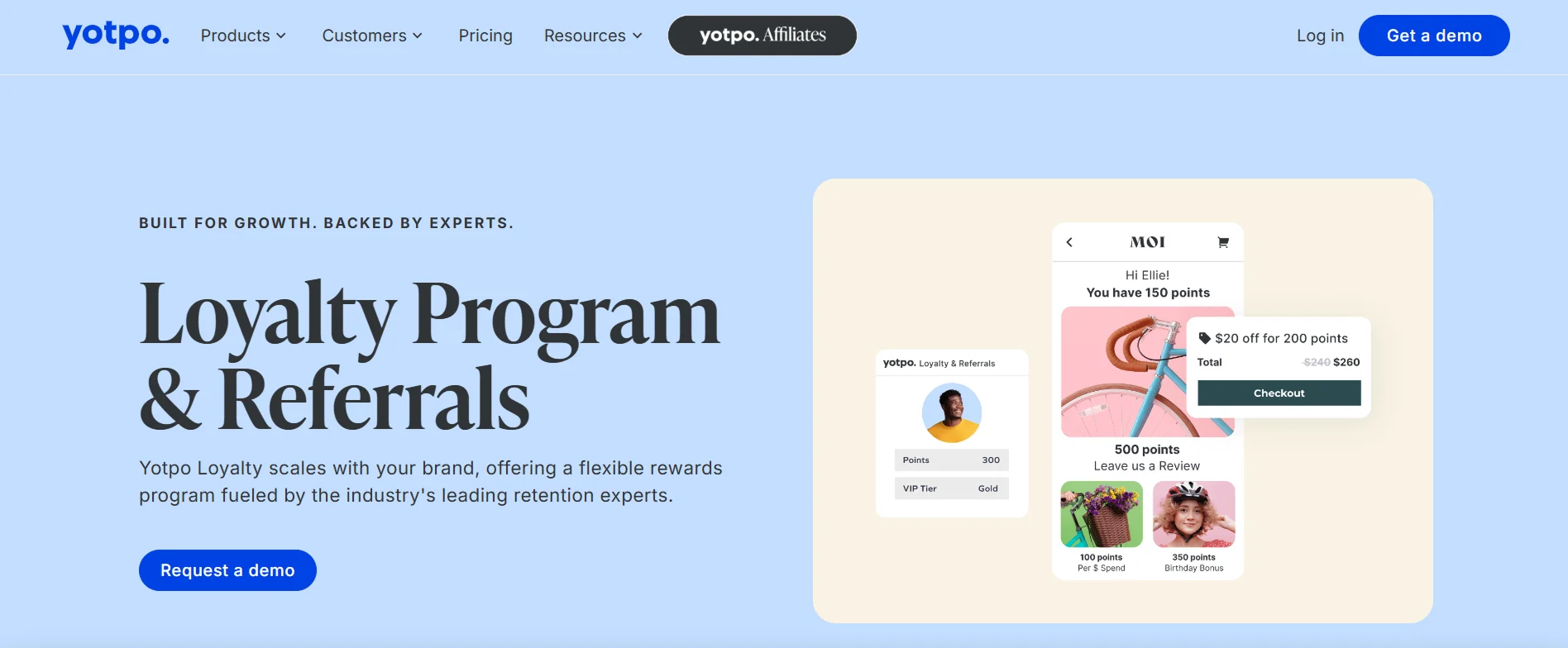
Shopify Rating: 4.7
Yotpo Loyalty & Referrals combines loyalty, referrals, and product reviews into one integrated solution. It allows you to reward customers for actions like signups, purchases, and feedback submissions.
Why it matters:
Integrating loyalty and reviews creates a continuous engagement loop—customers earn rewards for leaving feedback, and that social proof drives new conversions.
Who it’s best for:
Mid-sized e-commerce stores that want an all-in-one system for customer engagement and review management.
Impact metric:
Stores using Yotpo’s combined loyalty and review features often see a 2x boost in customer lifetime value (CLV).
Comparison note:
Yotpo offers powerful integrations but can feel complex for small teams. Nector remains a faster option for stores focused on simplicity and time efficiency.
5. Judge.me — Collect Reviews That Convert New Customers
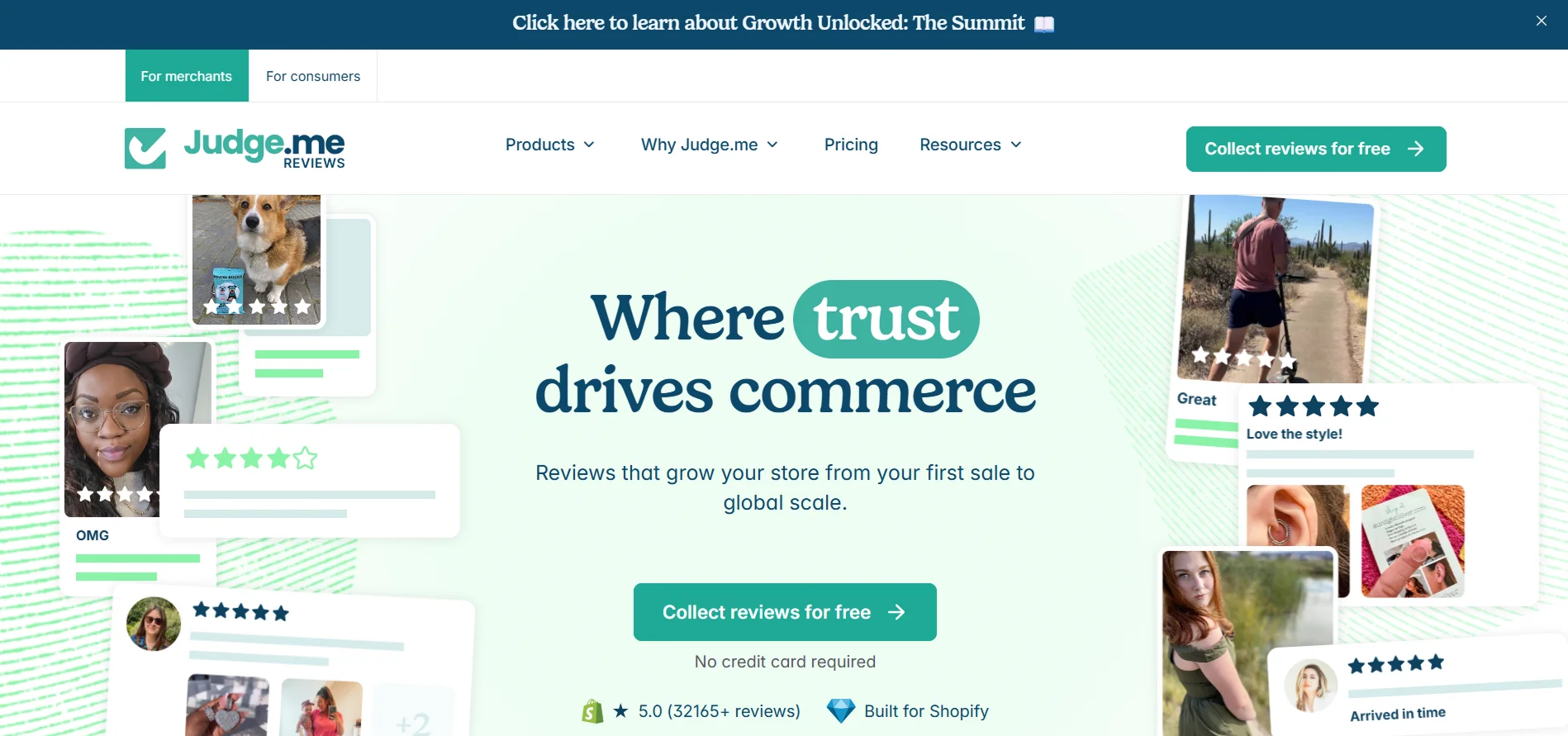
Shopify Rating: 5/5
Judge.me automates review collection and display. Customers can submit text, image, or video reviews, and you can showcase them using widgets on your product pages.
Why it matters:
Authentic reviews influence purchase decisions more than ads. Displaying verified feedback builds trust and encourages new customers to complete checkout.
Who it’s best for:
E-commerce stores that rely on product credibility—like skincare, apparel, or home décor brands.
6. Loox — Visual Reviews That Build Social Proof Fast
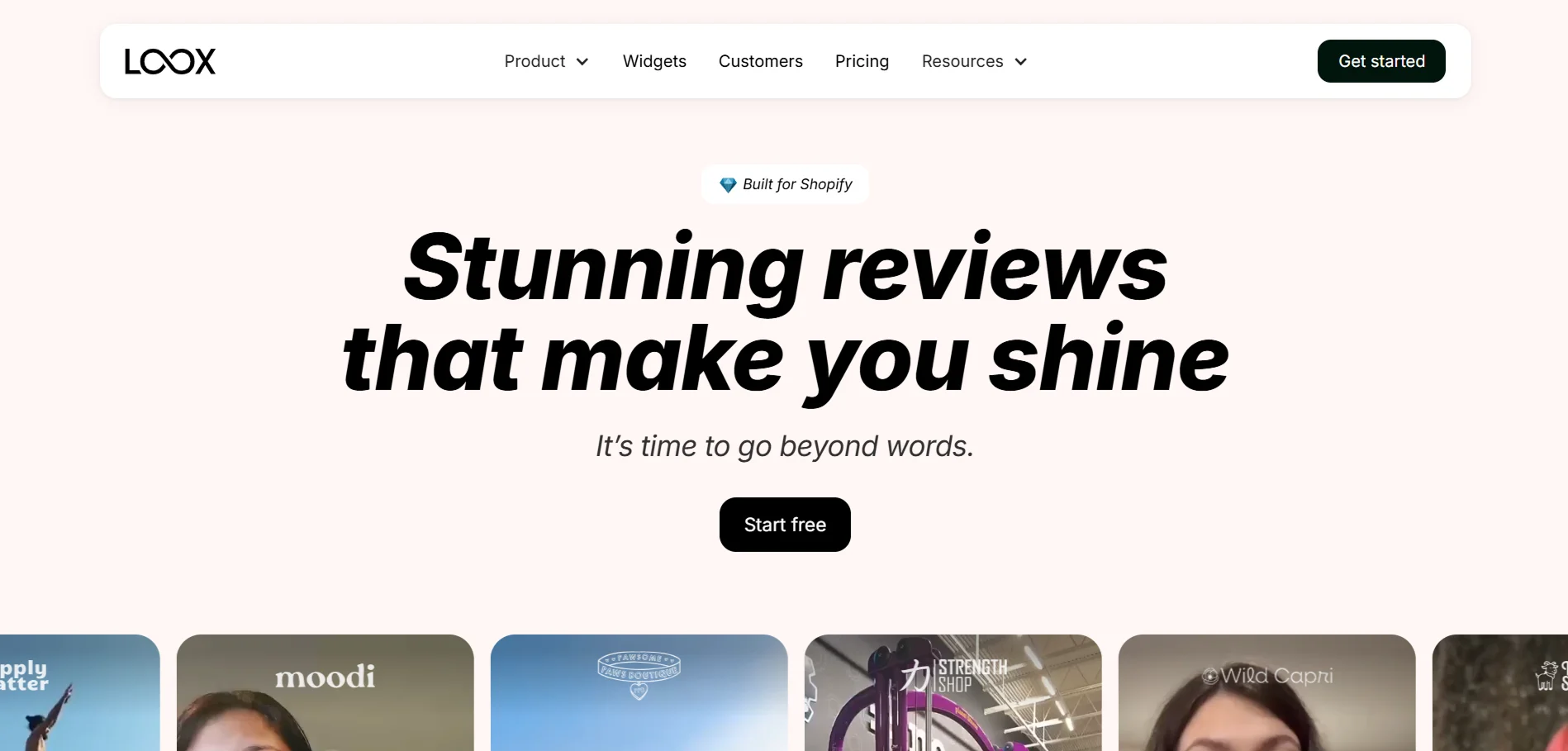
Shopify Rating: 4.9
Loox focuses on visual customer feedback. It allows you to collect photo and video reviews that can be embedded into product galleries or marketing campaigns.
Why it matters:
Visual content helps potential buyers see real product experiences, which improves click-through and reduces hesitation at checkout.
Who it’s best for:
Brands in fashion, beauty, or lifestyle niches that rely heavily on visuals.
7. Stamped.io — Automate Reviews and Customer UGC Collection
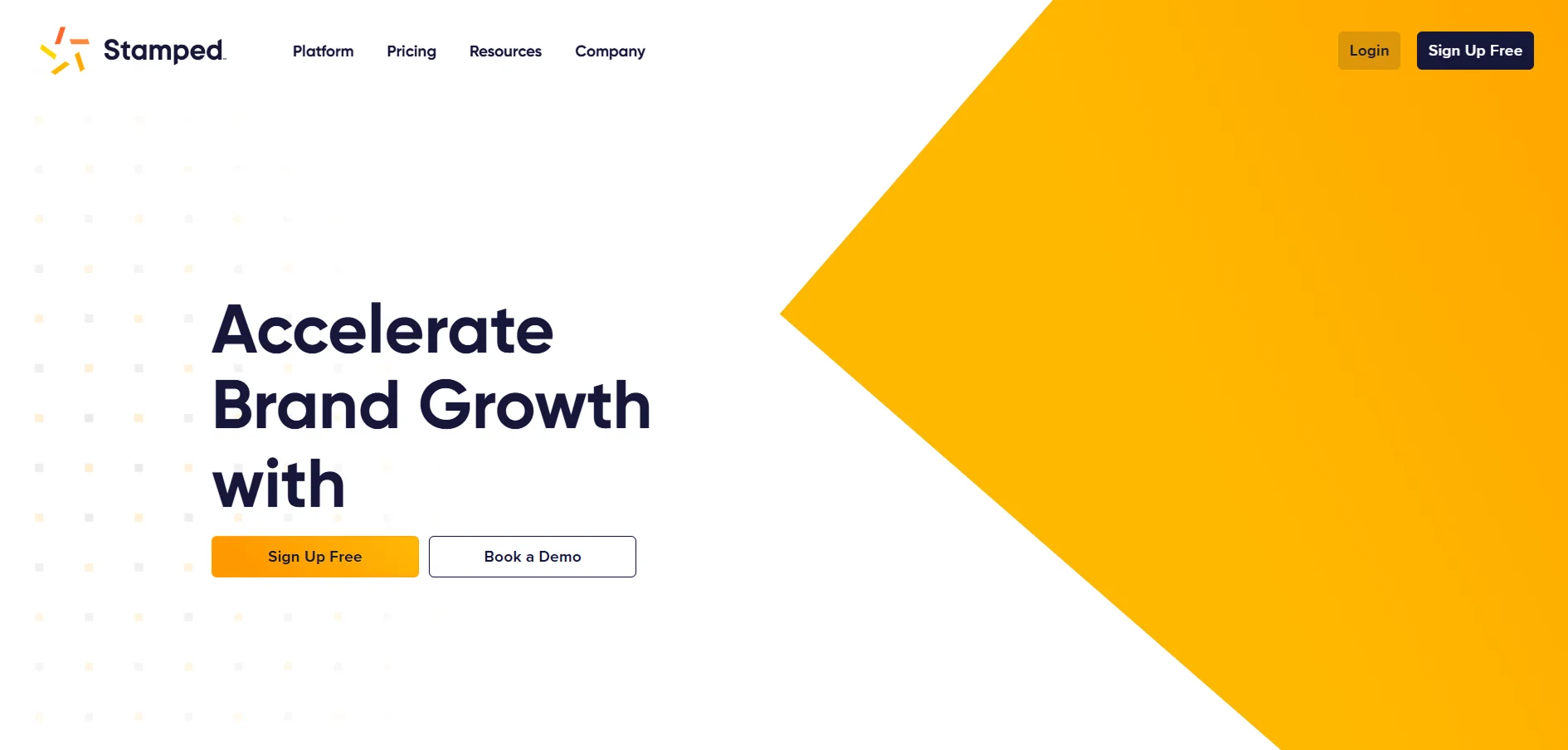
Shopify Rating: 4.8
Stamped.io automates post-purchase review requests and organizes user-generated content (UGC). It integrates with social media channels, letting you share reviews seamlessly.
Why it matters:
Collecting UGC builds trust while reducing ad spend since customers generate content for you. It’s especially effective for D2C brands.
Who it’s best for:
Growth-stage brands aiming to build community-driven credibility.
8. Klaviyo — Advanced Email and SMS Marketing for Shopify

Shopify Rating: 4.7
Klaviyo connects directly with Shopify to send targeted email and SMS campaigns. You can segment customers by behavior, purchase history, or reward status.
Why it matters:
Personalized messages keep your customers engaged long after checkout. Pairing Klaviyo with loyalty tools like Nector helps you send reward reminders automatically.
Who it’s best for:
Brands ready to scale with automated customer communication and data-driven targeting.
9. Omnisend — Automated Marketing for Abandoned Carts

Shopify Rating: 4.8
Omnisend helps recover abandoned carts through automated messages across email, SMS, and push notifications.
Why it matters:
Cart abandonment is a major source of lost revenue. Omnisend brings those customers back by sending timely reminders with personalized incentives.
Who it’s best for:
Small and mid-sized stores that want to automate cart recovery without heavy technical setup.
10. Privy — Popups and Forms That Capture More Leads
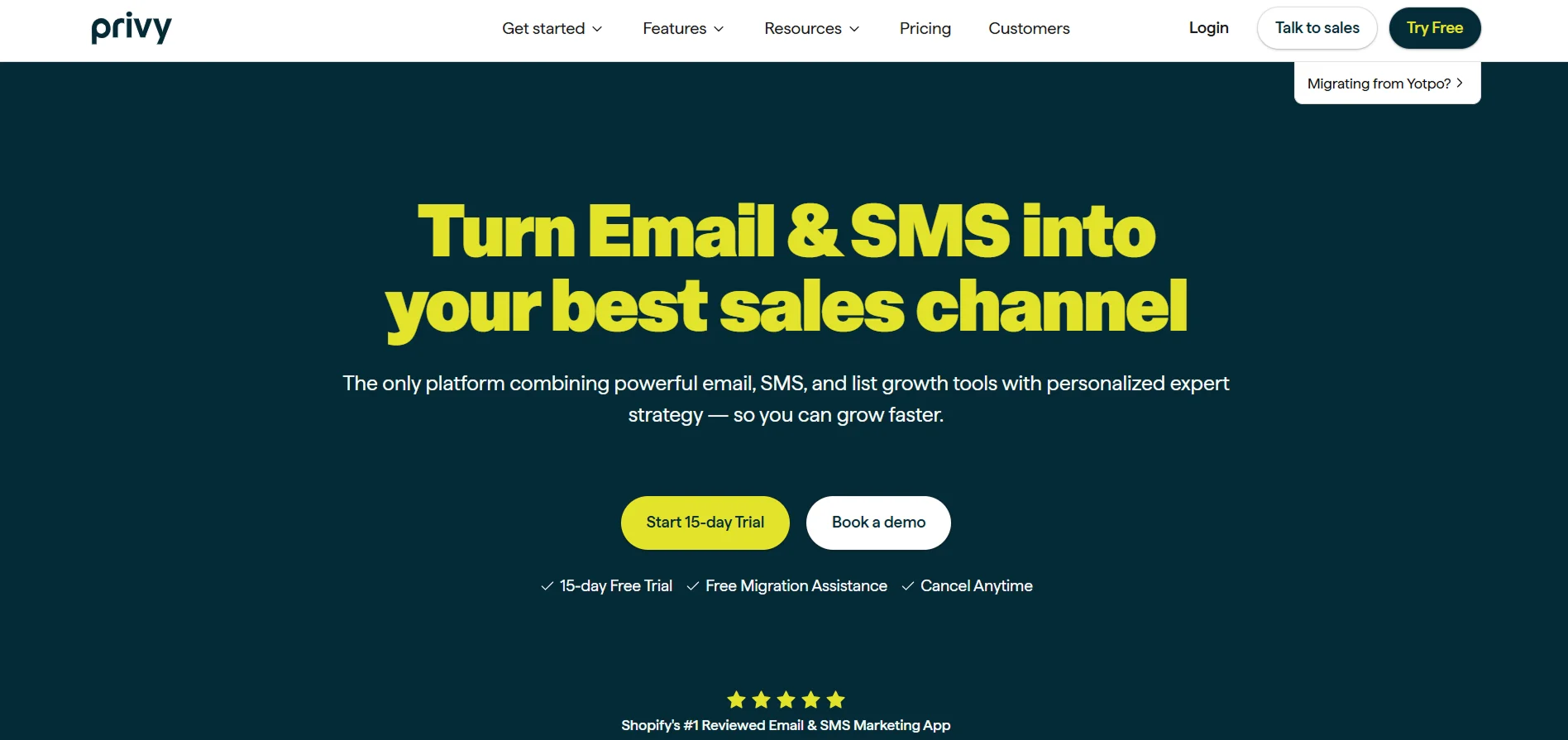
Shopify Rating: 4.5
Privy helps you create targeted popups, banners, and signup forms to grow your email list. You can offer discounts or free shipping in exchange for newsletter signups.
Why it matters:
Email lists remain one of the most cost-effective ways to retain customers. Privy makes it simple to turn visitors into subscribers.
Who it’s best for:
Founder-led stores that want to build owned marketing channels quickly.
11. ReConvert — One-Click Upsells and Post-Purchase Offers

Shopify Rating: 4.8
ReConvert allows you to add post-purchase upsells and thank-you page offers without disrupting checkout flow.
Why it matters:
Upselling immediately after purchase increases order value while the buyer is still engaged.
Who it’s best for:
Growth-stage brands focusing on maximizing average order value.
12. OptiMonk — Personalized Popups to Recover Lost Visitors
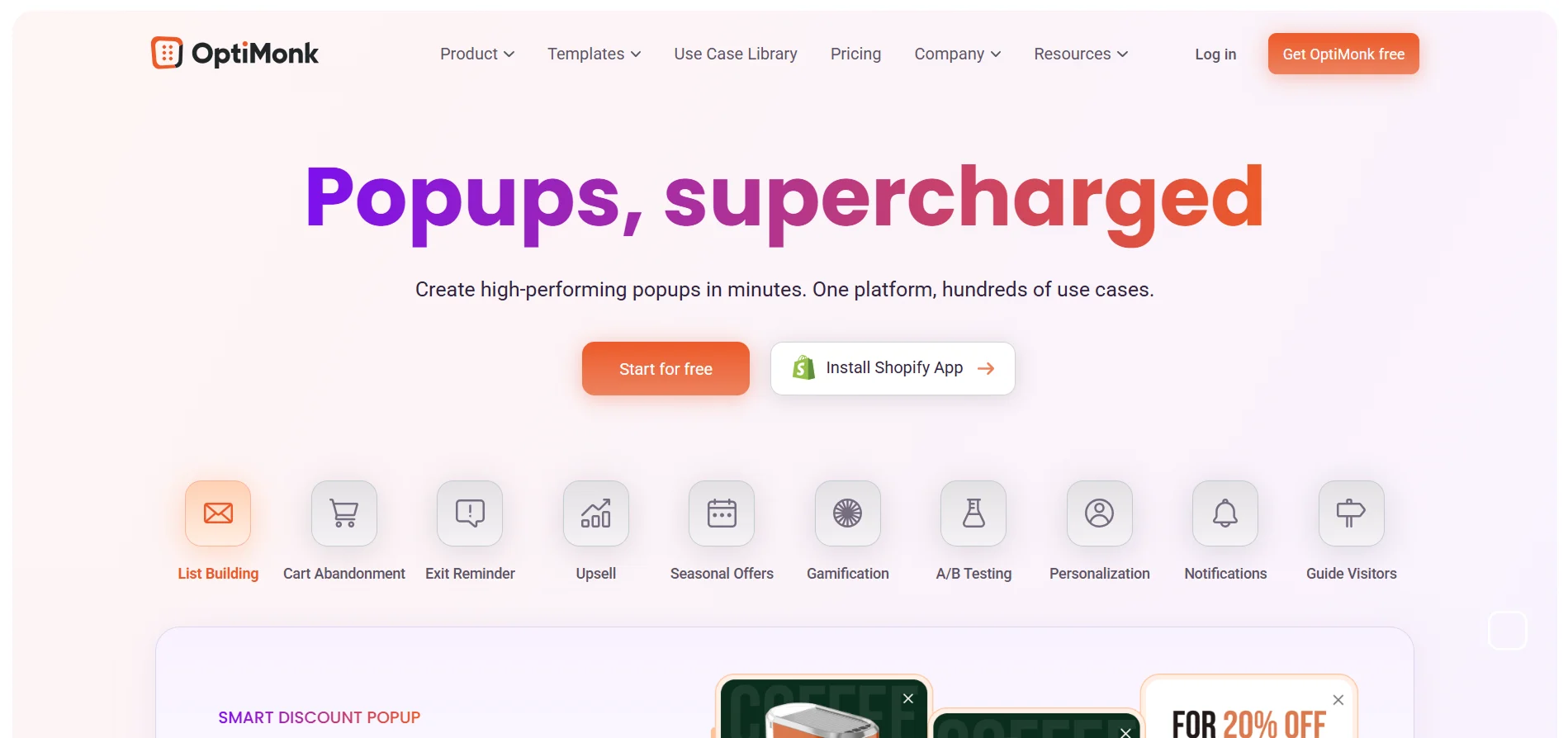
OptiMonk uses behavior-based popups to retain visitors before they exit. Messages adapt based on cart value, page activity, or time spent on-site.
Why it matters:
Dynamic engagement reduces bounce rates and increases completed checkouts.
Who it’s best for:
Startups that need quick wins in reducing site drop-offs.
13. CartHook — Streamlined Checkout Flow That Reduces Friction

Shopify Rating: 4.4/5
CartHook simplifies the checkout process and adds one-click upsells to improve conversion rates.
Why it matters:
A frictionless checkout means fewer abandoned carts and faster revenue recovery.
Who it’s best for:
Stores that experience frequent drop-offs at checkout or have complex product configurations.
14. Tidio — AI Chatbots and Live Support for Customer Engagement
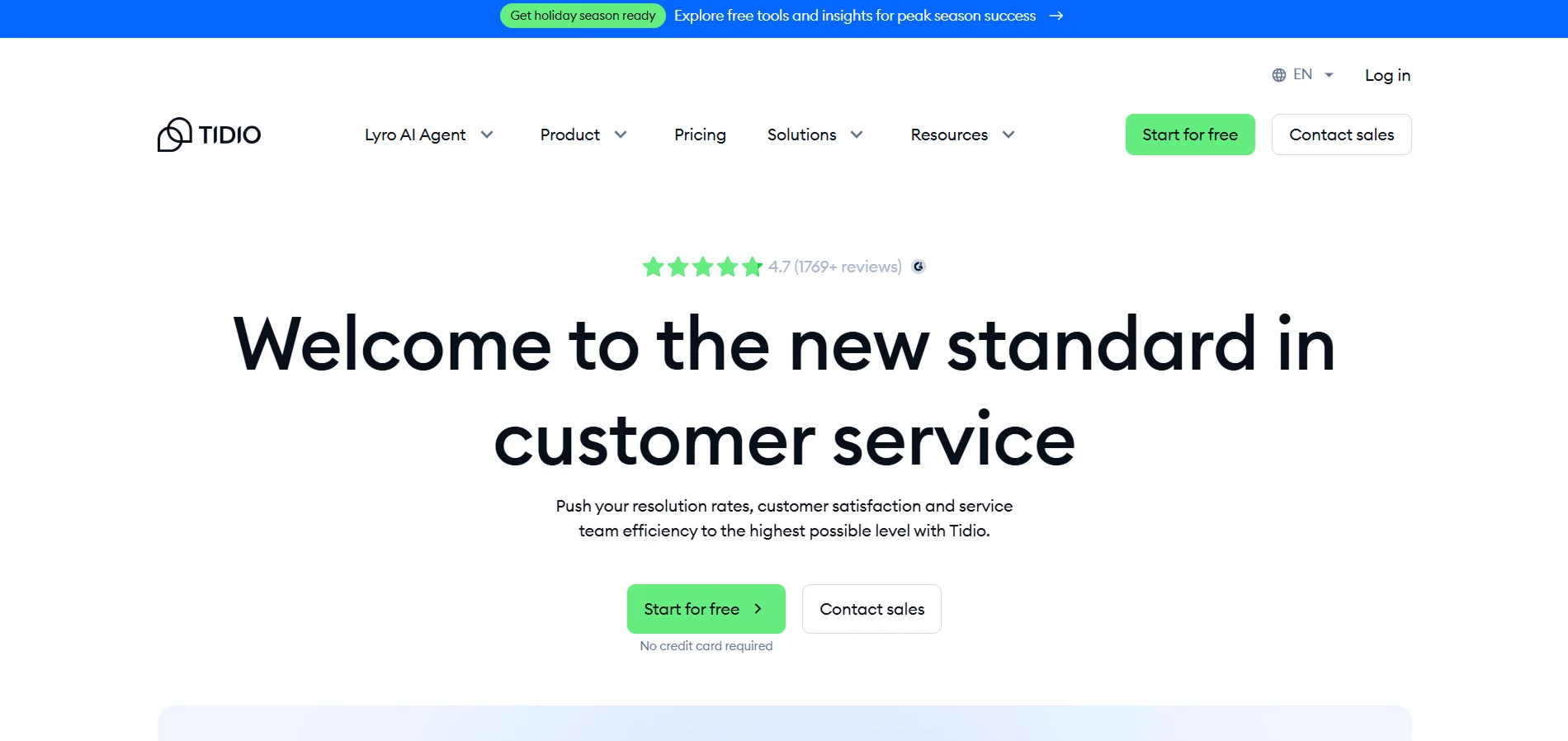
Shopify Rating: 4.6/5
Tidio combines live chat and AI chatbots to help you respond instantly to customer questions. It connects directly with Shopify, so you can view customer carts, recommend products, and resolve order queries in real time.
Why it matters:
Fast responses build trust. Shoppers who get instant answers are far more likely to complete purchases instead of abandoning the cart.
Who it’s best for:
Founder-led and small e-commerce teams that can’t always be online but want continuous customer engagement.
15. Gorgias — Centralized Helpdesk for Shopify Stores
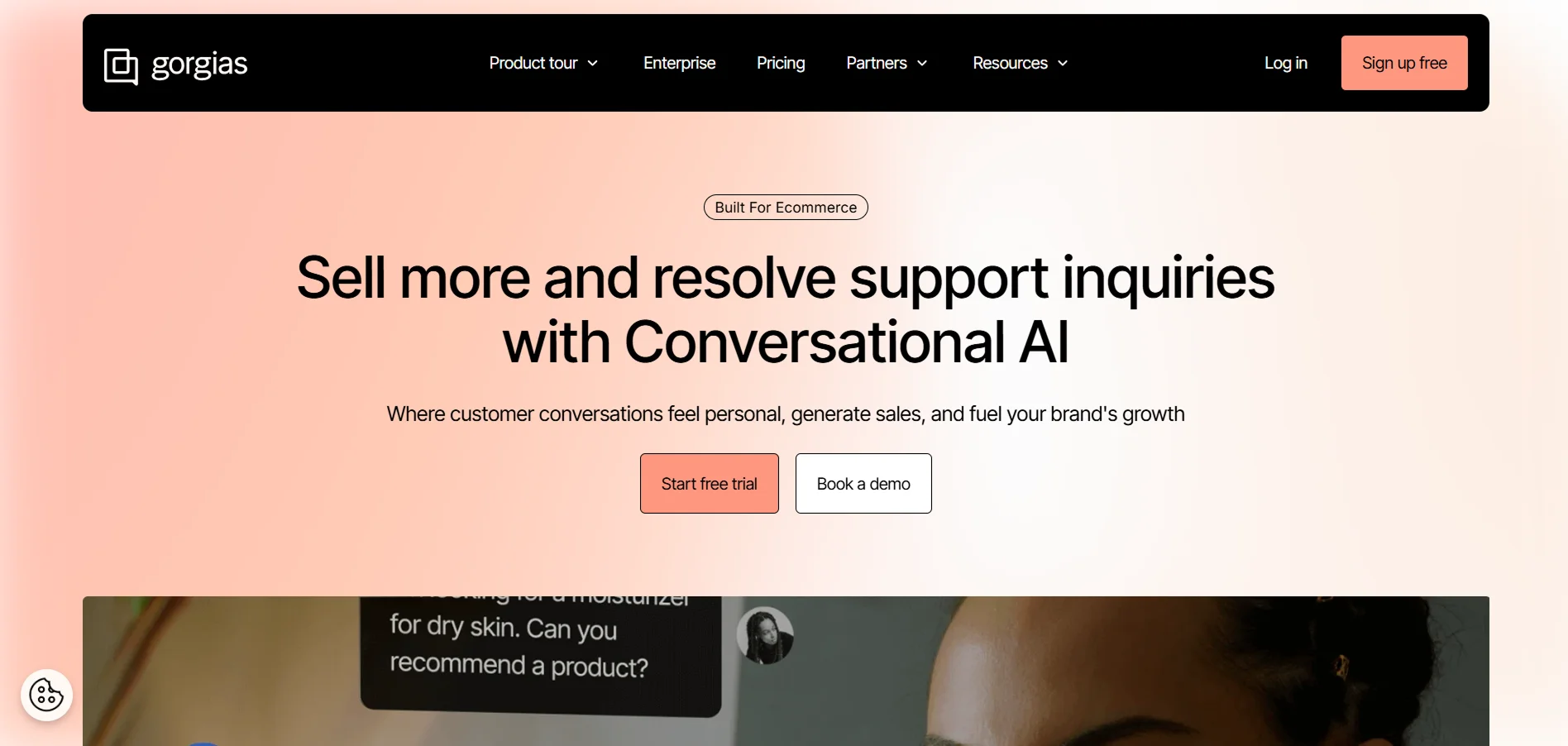
Shopify Rating: 4/5
Gorgias brings all your customer communication: emails, live chats, Instagram DMs, and Facebook messages, etc. into one dashboard. You can automate replies for frequent questions and track response performance.
Why it matters:
Managing messages across multiple channels can be overwhelming. Gorgias reduces response time and improves customer satisfaction, which directly influences retention.
Who it’s best for:
Growing Shopify brands that receive high message volumes across multiple channels.
16. Hotjar — Understand User Behavior and Drop-Off Points

Shopify Rating: 4.7/5
Hotjar records user sessions and heatmaps to show where visitors click, scroll, or drop off on your site. You can identify design or checkout issues that block conversions.
Why it matters:
You can’t improve what you can’t see. Hotjar gives you visual evidence of friction points so you can optimize pages for better engagement.
Who it’s best for:
Mid-sized stores that want data-backed design decisions instead of guessing where users lose interest.
To help you quickly compare their functions and best-fit use cases, here’s a summary table:
These apps shine on their own, but their real strength appears when they work together toward a shared growth goal.
How Must Have Shopify Apps Work Together to Multiply Store Sales
Using one Shopify app can improve a specific function, but sustained growth comes when tools work together. Loyalty, review, and marketing automation apps create a continuous loop that keeps customers engaged after every purchase. Together, they build trust, encourage repeat buying, and maintain personalized communication.
Here’s an example to illustrate how connected apps can work:
- A fashion brand sets up Nector for loyalty and referrals, Klaviyo for automated email campaigns, and Judge.me for verified reviews.
- This is a hypothetical scenario meant to show the process, not actual results.
- Nector rewards customers for reviews and referrals, Judge.me strengthens credibility through authentic feedback, and Klaviyo reminds customers to use their earned points.
- The combination creates a smooth customer journey that encourages continued engagement.
Why focusing on a smaller, well-integrated app stack works better:
- Saves time by reducing the need for manual updates and duplicated work.
- Keeps data accurate and consistent across all tools.
- Ensures customers experience consistent branding and messaging at every touchpoint.
- Makes it easier to grow without reworking your entire tech setup.
When your loyalty, marketing, and review tools are connected, each customer action feeds into the next. Customers earn points, receive reminders, and return to buy again without requiring extra management from your team. This structure builds a store that runs efficiently and continues to grow through customer relationships.
Here is how each category complements the others:
When your loyalty, marketing, and service tools exchange data, your store operates as a connected system. Customers earn points, receive reminders, and return to purchase again without extra manual work from your side. This integration-focused setup turns every interaction into an opportunity for long-term revenue growth.
Ready to make every customer interaction count? Turn repeat purchases into a consistent growth engine with Nector’s loyalty programs designed for Shopify brands that want smarter retention, not more complexity. Build your loyalty program with Nector!
.webp)
Integrating your tools is only the first step—getting the most value from them requires consistent optimization and upkeep.
Tips to Get the Most Out of Your Shopify Apps

Installing the right apps is only part of the process. To get consistent results, you need to manage, evaluate, and align them with your store goals. A few structured habits can help you get the most value from every tool you use.
Follow these best practices to keep your app stack efficient and productive:
- Audit your apps every quarter
Review all installed apps at least once every three months. Check for tools performing similar functions or features that overlap. Removing unused or redundant apps can improve site speed and reduce subscription costs. You can use Shopify’s built-in “Apps and Sales Channel Settings” dashboard to see which ones affect performance and load times. - Track ROI using Shopify analytics
Measure how each app contributes to sales, conversion rates, and repeat purchase behavior. Track referral-driven sales, loyalty redemptions, and average order value in Shopify Analytics or through custom dashboards in tools like Report Pundit. If an app shows minimal performance improvement over several billing cycles, consider replacing it. - Maintain consistent branding and communication
Ensure that messages from your loyalty program, email campaigns, and pop-ups match your store’s tone and design. For instance, pair Nector loyalty notifications with the same color scheme and language used in your Klaviyo email templates. This consistency builds trust and creates a smooth experience for your customers. - Keep your team aligned on app use
If multiple team members manage your store, document app workflows in a shared space such as Notion or Google Sheets. Assign clear responsibilities for managing integrations and updates to avoid confusion or accidental data loss.
Following these habits keeps your app setup clean, measurable, and customer-focused—helping you grow efficiently without unnecessary complexity.
Also Read: New Year, New Sales: Shopify Strategies to Retain Customers Beyond the Holidays
While smart usage boosts results, avoiding a few common mistakes keeps your Shopify apps reliable and effective long term.
Common Mistakes to Avoid When Using Shopify Apps

Many store owners install apps quickly without checking their long-term impact. Mismanaging integrations can lead to poor performance, higher costs, or inconsistent data. Staying aware of common mistakes helps you maintain control over your tools.
Here are the key issues to watch for:
- App overlap
Avoid installing two apps that perform the same task, such as multiple email pop-up tools or loyalty programs. Overlapping functions can slow down your store, cause conflicts, and make data tracking unreliable. Before adding a new app, review its core features against what you already use. - Ignoring customer data privacy
Every app you install handles some level of customer data. Always check if the app is compliant with major privacy laws like GDPR and CCPA. Review data-sharing settings within your Shopify Admin to ensure sensitive customer information isn’t being stored unnecessarily or exported without consent. - Skipping proper onboarding or setup
Rushing through onboarding often leads to broken automations and underused features. Spend time following setup guides or tutorials provided by app developers. For example, Klaviyo’s integration guide helps ensure that contact lists sync correctly with Shopify data before you send your first campaign. - Abandoning integrations after setup
Apps need periodic updates and monitoring to stay functional. Check for version updates, expired tokens, or permissions that may have changed. Leaving integrations unattended can cause features like referral tracking or email triggers to stop working.
Staying disciplined with app management ensures your tools stay reliable, compliant, and aligned with your growth goals. Treat your apps like an investment that needs ongoing attention rather than a one-time setup.
Conclusion
Building a successful Shopify store doesn’t depend on how many apps you use, but on choosing the right mix that works together. The right combination of tools can simplify your operations, automate repetitive tasks, and create consistent customer experiences. When loyalty programs, review systems, and marketing automation are connected, they transform one-time buyers into repeat customers and make growth more predictable.
Nector stands out by combining loyalty, referrals, and reviews in one simple platform. It helps you reward customers automatically, track engagement with real-time analytics, and personalize communication without adding more work for your team. Designed for Shopify stores of all sizes, Nector saves time while helping you build lasting customer relationships.
Ready to see how effortless retention can be? Discover how Nector helps Shopify brands grow repeat sales through loyalty, referrals, and reviews — all in one platform. Book a free demo with Nector today!
FAQs
Q: How do Shopify apps actually help small teams increase revenue efficiently?
A: Shopify apps automate core tasks like loyalty management, email follow-ups, and review collection. This saves hours weekly and ensures consistent engagement with every customer interaction.
Q: Can I integrate multiple Shopify apps without affecting store speed?
A: Yes, but choose lightweight, verified apps that integrate directly with Shopify APIs. Fewer, well-connected tools maintain performance while improving functionality.
Q: How can I measure if my Shopify apps are truly driving repeat purchases?
A: Track metrics like repeat purchase rate, average order value, and referral conversions within Shopify Analytics or Nector’s loyalty dashboard.
Q: What’s the best way to connect loyalty programs with marketing automation?
A: Sync customer data between tools like Nector and Klaviyo to send personalized reward reminders and reactivation campaigns automatically.
Q: How often should I review and update my Shopify app stack?
A: Audit your apps quarterly. Check overlaps, update integrations, and remove unused tools to maintain faster load times and better data flow.
Q: Can referral and loyalty apps work together to lower acquisition costs?
A: Absolutely. Loyalty rewards retain existing buyers, while referral programs turn them into advocates, driving new customers at minimal cost.
FAQs
Start Building Customer Retention That Lasts




